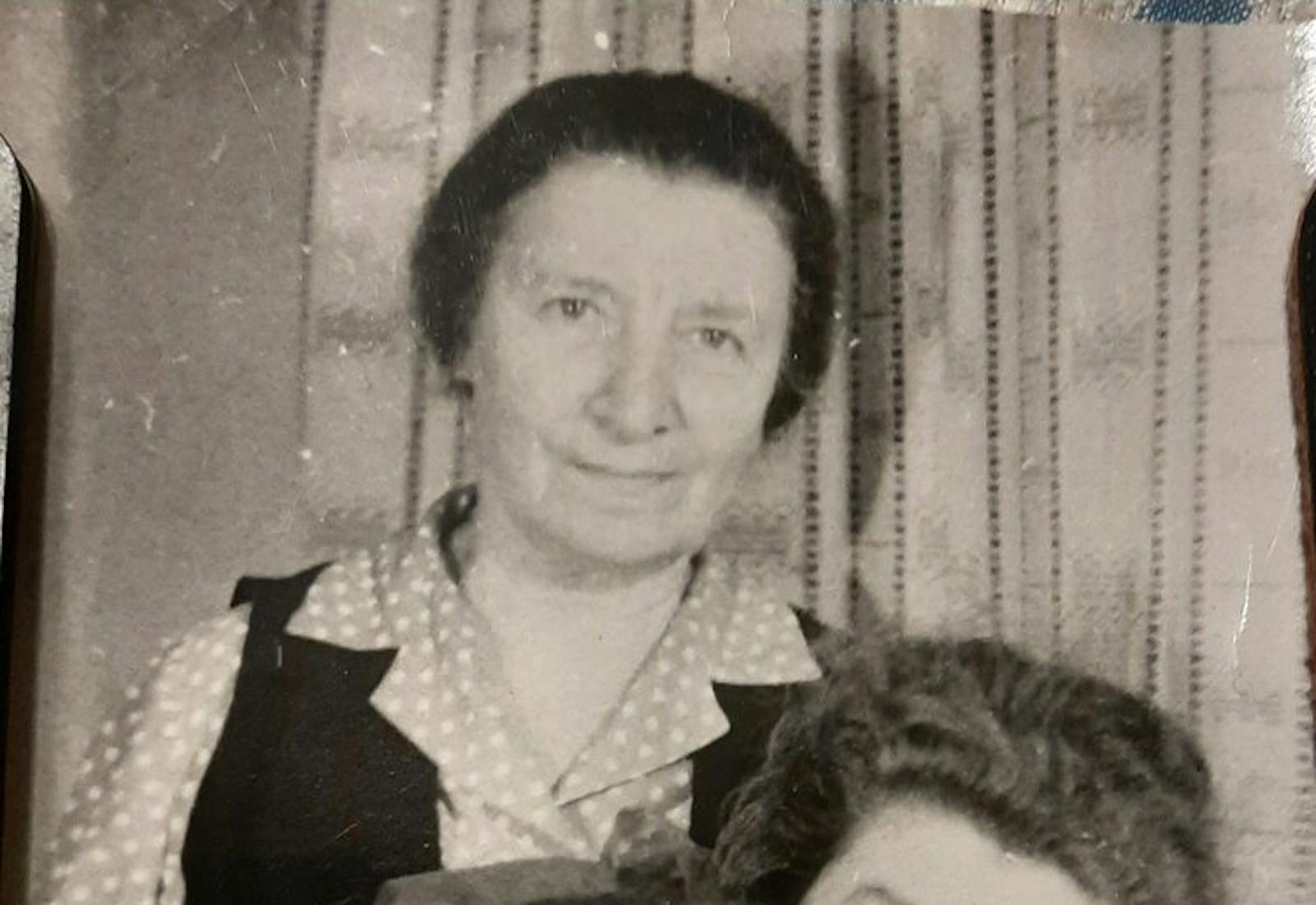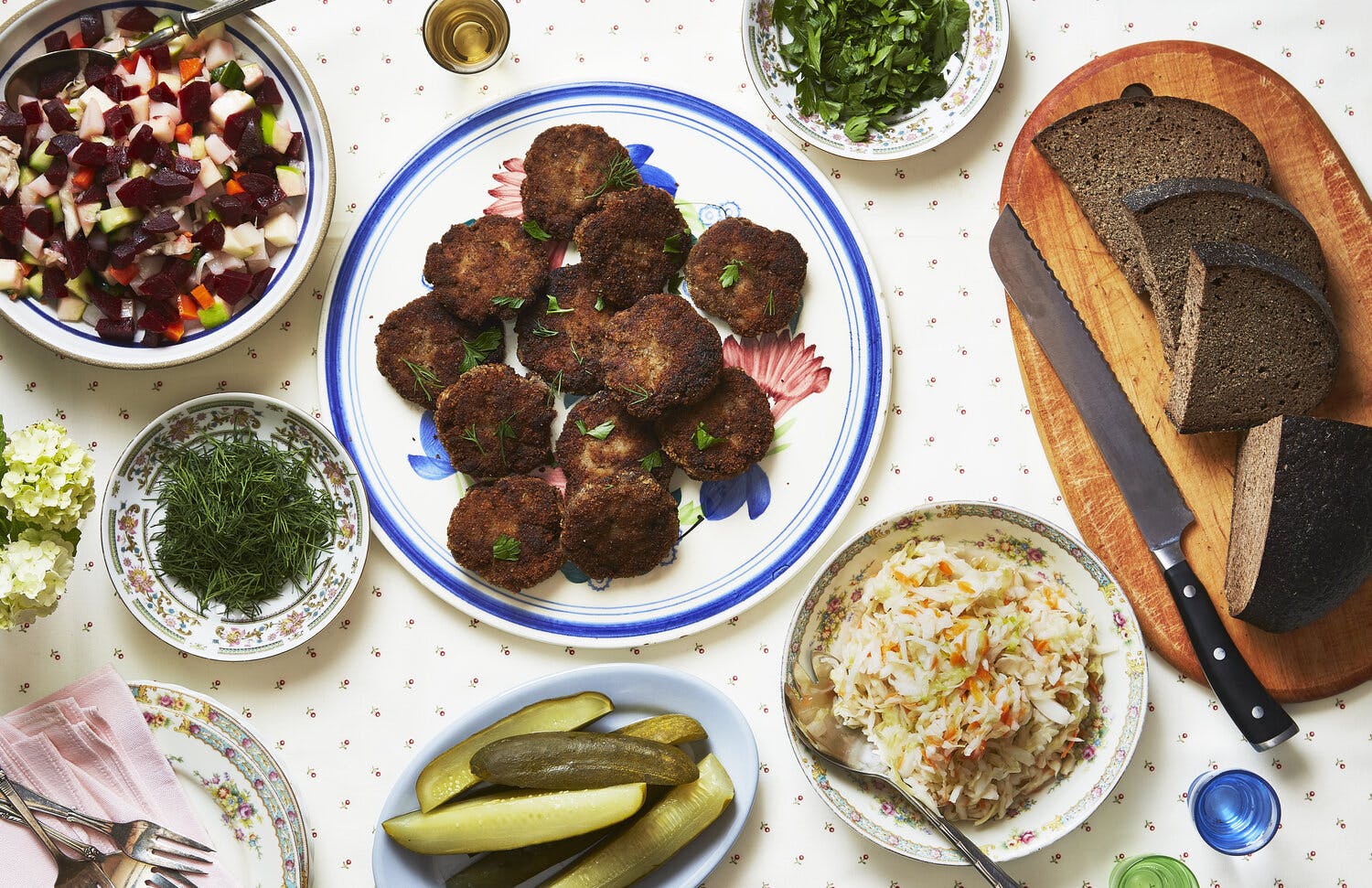Shared by Anna Kharzeeva

In Moscow of the 1980 and 1990s, there was a network of babushki, or grandmothers, shuttling across the city on buses and subway cars, clutching containers of culinary staples of the Soviet diet for family members who lived across town, says food writer Anna Kharzeeva. Her grandmother Elena was one of these women. She would pour bouillon into plastic bottles, fill old sour cream containers with beef patties called kotlety, and wrap up her signature sponge cake called biskvit.
Elena would march with the meal from her apartment, which she shared with her mother Moun'ka, to the apartment where Anna lived with her brother and mother. “I was raised by my mom and my grandmother and great-grandmother,” says Anna. “It was a very strong female line.” The recipes of her family and childhood trace back through four generations of women to Kiev, some 500 miles from Moscow, which her great-grandmother left for Moscow in 1926.
Moun’ka’s mother was “the last person to observe any Jewish tradition,” in the family, says Anna. They never met but, “my great-great-grandmother doesn’t feel so far away. I grew up hearing about her,” she adds. In their family, like many other Soviet Jewish families, religious traditions faded. “I feel like I grew up without many traditions…. The Soviet Union replaced the old traditions with traditions of its own,” Anna explains.
Few Jewish recipes were part of the family repertoire by the time she was born in 1986. The staples that defined their family kitchen were Soviet and Russian. There was sour cabbage fermented at home, a chopped salad of cucumbers, potatoes, apples and beets called vinaigrette, soups like borscht, plov (a rice dish from Central Asia), and always biskvit. Elena’s cooking was influenced mostly by her mother, but also by recipes she exchanged on note cards with friends and “The Book of Tasty and Healthy Food,” a cookbook published by the Soviet government aimed at creating a national cuisine.
“The ‘90s was supposed to be a very difficult and hungry time [but] I don’t remember any of that,” says Anna. Her mother and grandmother made sure food was in their apartments. But, Anna didn’t learn to cook the family recipes or help in the kitchen as a child — that came later when she was living in Australia with her now-husband. “I remember calling my grandmother from this neighborhood in Sydney,” she says. Anna was hosting her now-in-laws and wanted to prepare a Russian meal for them, so she asked her grandmother how to make borscht. “She sort of laughed... and I wrote it all down,” Anna recalls.
Back in Moscow, Anna expanded her culinary repertoire when she started a culinary club for students she was teaching English. And, in 2014, she started to cook through many of the recipes in “The Book of Tasty and Healthy Food.” In a sort of Russian riff on “Julie & Julia,” Anna asked her grandmother’s opinion on the recipes and for stories, noting them in her 2020 book “The Soviet Diet Cookbook.” The result is charming, peppered with personal stories, and offers a look into how Soviet cooks like her grandmother Elena made their own renditions of national dishes.
Sadly, Elena passed away earlier this year from COVID complications. For her wake, Anna and her brother made their grandmother’s stuffed hand pies called pirozhki. “It was an important [moment] of connection and memory,” says Anna, adding that she’s grateful she wrote down her recipes when she did. “I open my book and she’s alive in it.”

